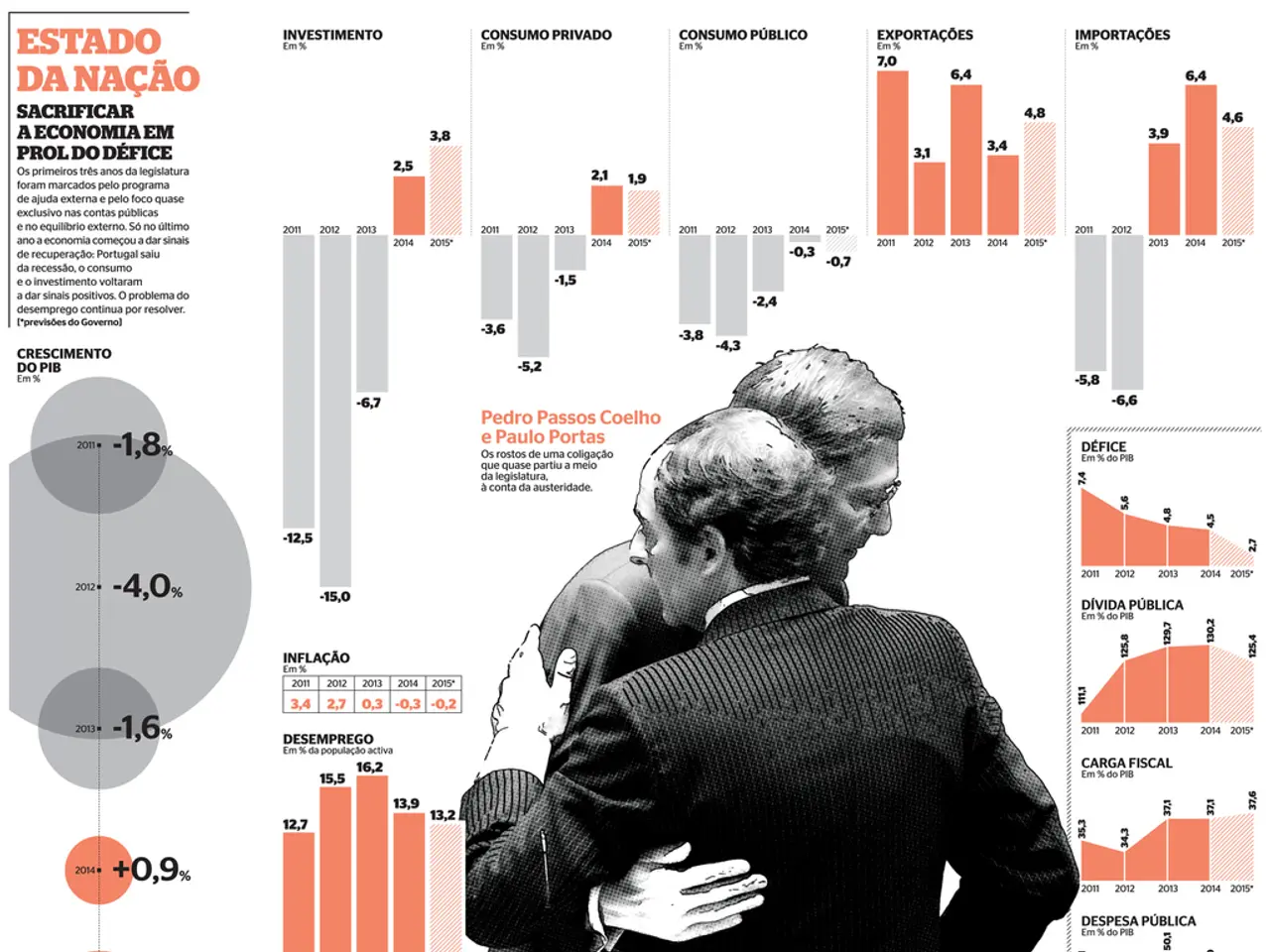Medicare's Components Decoded: Insight into Parts A, B, C, and D
Medicare, a federal health insurance program, provides healthcare for older adults, certain younger people with disabilities, and individuals with End-Stage Renal Disease (permanent kidney failure requiring dialysis or a transplant). The program is divided into four parts, each covering different health services.
Breakdown of Medicare Parts and Their Costs
1. Medicare Part A
- Premiums: Typically no premium is required if you or your spouse paid Medicare taxes for at least 10 years while working. Otherwise, premiums can apply. In 2025, the monthly Part A premium is $285 if someone paid Medicare taxes for 30 to 39 quarters, and $518 if they paid less than 30 quarters.
- Deductible: $1,676 per hospital stay in 2025.
- Copays: Daily copays apply for hospital stays exceeding 60 days, starting at $419 per day and increasing for longer stays.
- Income Effects: No specific income-based adjustments for Part A premiums.
2. Medicare Part B
- Premiums: The standard premium is $185 per month in 2025 for most people. However, higher premiums apply for those with higher incomes.
- Deductible: $257 annually in 2025.
- Copays/Coinsurance: Generally 20% of outpatient bills after the deductible is met.
3. Medicare Part C (Medicare Advantage)
- Premiums: Vary; some plans have $0 premiums, while others may charge more.
- Costs: Includes Part A and Part B costs, plus additional fees set by the plan.
4. Medicare Part D (Prescription Drug Coverage)
- Premiums: Vary by plan and provider, typically ranging from $10 to over $100 per month.
- Deductible: Varies by plan; some plans have no deductible.
- Copays/Coinsurance: Also varies by plan.
5. Medicare Supplement Insurance (Medigap)
- Premiums: Highly variable based on age, health, location, and plan level—ranging from approximately $117 to $544 per month for a 65-year-old.
Assistance for Lower-Income Beneficiaries
Various programs can help lower-income beneficiaries with Medicare costs. These include Medicare Savings Programs (MSPs), Medicaid, and Supplemental Security Income (SSI). Additionally, Part C plans cap the out-of-pocket costs for covered healthcare.
Enrollment and Key Dates
The initial enrollment period for Medicare begins 3 months before someone turns 65, includes the birthday month, and ends 3 months later. The open enrollment period is from October 15th to December 7th, during which a person can add, drop, or change between Medicare Advantage plans and original Medicare and add or change Part D plans. The general enrollment period is from January 1st to March 31st for coverage that starts on July 1st. The special enrollment period is for certain life events, such as moving to a new location.
In 2022, 65.1 million Americans had Medicare, with 3.9 million of those being new beneficiaries. Private insurance companies offer Medicare Part D plans and Medigap, a type of Medicare supplement insurance that helps cover out-of-pocket expenses for individuals with original Medicare. The Centers for Medicare and Medicaid Services (CMS) administers Medicare and uses a star rating system for Part C plans. People can use an online tool to find Advantage plans in their state.
[1] Medicare.gov
[2] Medicare Interactive
[4] KFF.org
- Lower-income Medicare beneficiaries can find assistance from programs like Medicare Savings Programs (MSPs), Medicaid, and Supplemental Security Income (SSI), which help cover Medicare costs.
- Part C (Medicare Advantage) plans, managed by private insurance companies, cap the out-of-pocket costs for covered healthcare among lower-income beneficiaries in addition to including costs from Part A and Part B.
- Understanding the science of various medical-conditions is crucial for maintaining health-and-wellness, and health organizations can provide valuable resources and information for individuals with these conditions.




